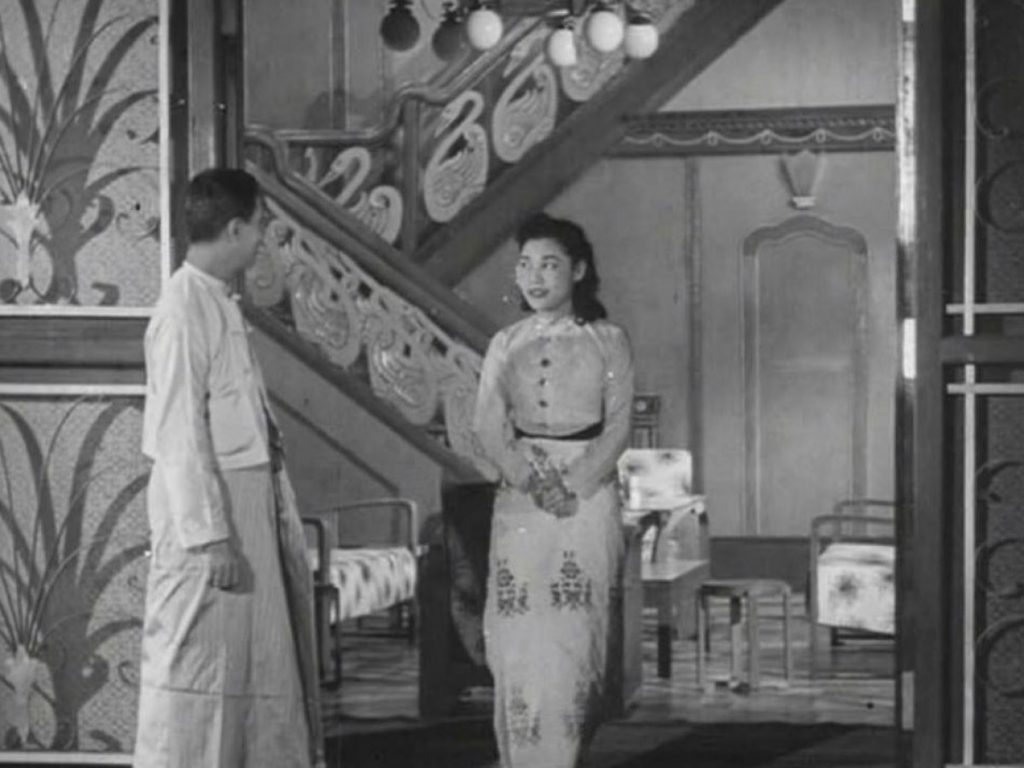Patrick Holzapfel
– Michal Bregant from Národní filmový archiv presented one of the most special gifts of the retrospective: A 35mm copy of Yadanabon (1953, Tin Maung), a film from Myanmar in Burmese language with Czech subtitles.
– I have never seen a film from Myanmar. Bregant reports on the loss of a big part of the film heritage of the country. After the golden age of then Burmese cinema in the 1950s and a time of ideological censorship one decade later, film copies were sold to TV broadcasters who ultimately destroyed them in the 1980s and 90s. A while back a group of enthusiastic young filmmakers have created an independent network to find remaining film copies around the world. Up to now their archive consists of about 3000 Film cans, most of them containing news reels.

– I have rarely seen a film in which so many moths and other insects swirl, crawl and fly through the scenes. I wonder if they were attracted by the artificial light. Actors did not really respond to those animals. Sometimes it was hard to tell whether it was really insects or just the traces of time inscribed on the copy. It was a beautiful little diversion that kept me from trying to understand too much.
– Since I speak neither Burmese nor Czech I was in for a special treat. It was a common practice in the early days of cinematheques to present films without subtitles. Henri Langlois famously did so in Paris, for example with Japanese films and Peter Kubelka, in his cycle “Was ist Film“ puts forward this policy of a pure cinematic experience not disturbed by language appearing on the screen. Yet, the films Kubelka chooses decidedly work on a level that helps to learn about the language of cinema. Yadanabon is close to a theatre play filmed with a camera by contrast. Understanding language is important for this film. Or isn’t it?
– The film is an adaptation of a novel by Shwe U Daung which is in itself an adaptation of the famous Victorian novel East Lynne by Ellen Wood.
– It is clear that this particular choice of Národní filmový archiv talks about the relevance and also hardship of international connected archival work. The film survived in Prague in a shorted version because it was invited to Karlovy Vary International Film Festival in the 1950s. Bregant reports that a scene with a popular song and choreography is missing. He claims that it can’t be censorship. A private collector had recorded the film on VHS in the 1980s. On the tape the archivists found the missing scene. In these stories and anecdotes the idea of film history is always most shattered and at the same time alive for me.
– A retrospective on the work of FIAF could also consist of all the films lost, all the films that we will never be able to see.
– Of course, some narrative developments of Yadanabon were comprehensible without really understanding what was said. Yet, I tried not to follow the story but grasp as many details and little observations as possible. For example, together with Jan-Hendrik Müller (who works with the Film Collection at the Film Museum) I discovered a very clumsy but entertaining way in which characters entered the frame.
– Only in a couple of scenes the film employs shot/reverse shot patterns. Most of the time we observe the scenes from outside, almost like in early cinema. There are some notably exceptions to this such as when the main protagonist, a mother who gets kidnapped and defaced after eloping with another man has a nightmare/vision concerning the toys of her children.
– The use of music and its importance became very obvious while watching the film. It is an emotional but also structural element.
– Towards the end of the film a sudden connection to Christian Petzold’s Phoenix occurred to me. A man can not recognize the woman he loves. It is one of these random associative moments in cinema.
– It is also a film of playful ornamentation. That is true for the glistening and neat costumes as well as for certain aspects of the production design such as images of swans decorating a stairway. Now the question remains to my Western eyes if those elements are part of Burmese culture in the 1950s or if they are part of the sort of escapism this film might have wanted to provide.
– Discovering those treasures of film history does not necessarily lead to a better understanding. Yet, there is a sort of sensuality of understanding in cinema, something that is as important because it creates curiosity, images, empathy and a feeling for movements and spaces that can not be replaced by anything else.
More on Forever Film
Notes on Grauzone (1979, Fredi M. Murer)
Notes on Film and Reality (1942, Alberto Cavalcanti and Ernest Lindgren)